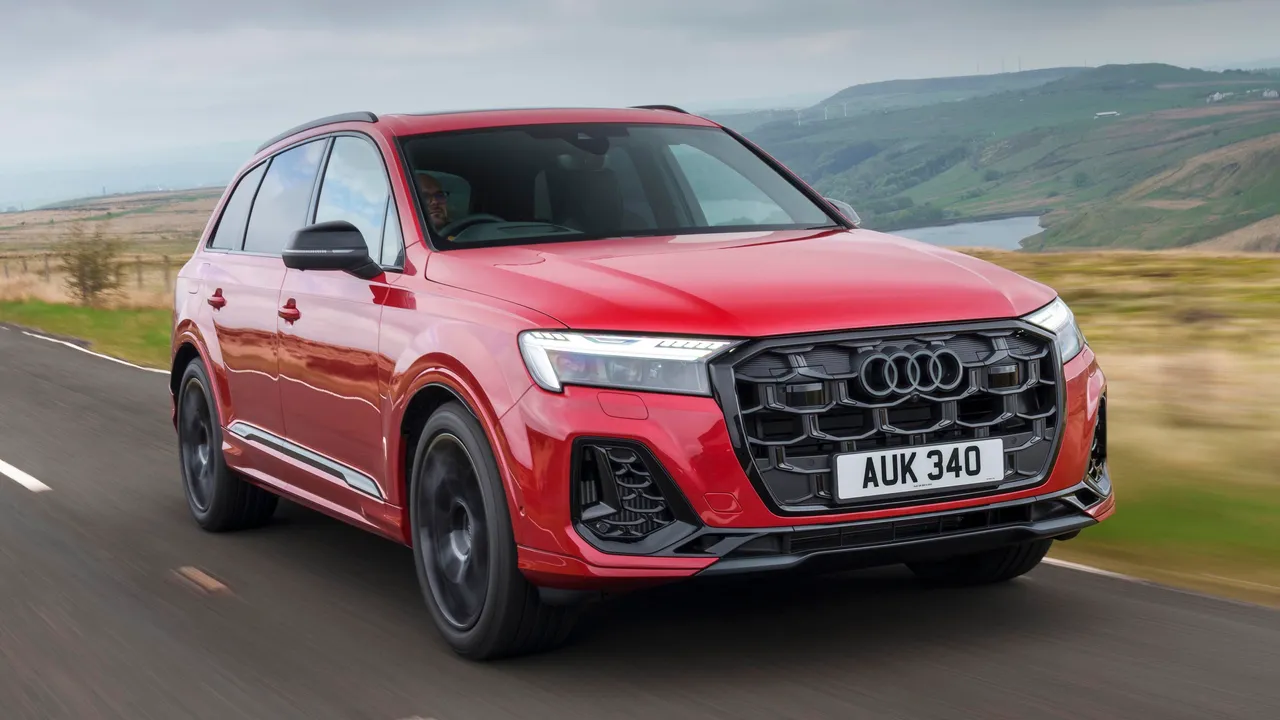Noise, Vibration, and Harshness (NVH) performance has become one of the most critical factors distinguishing premium SUVs from budget alternatives.
As consumers increasingly demand car-like refinement from their utility vehicles, manufacturers have invested billions in acoustic engineering, active noise cancellation, and sophisticated suspension tuning.
The modern SUV landscape presents a fascinating dichotomy: while some models achieve library-like silence that rivals the world’s most expensive sedans, others remain plagued by intrusive road noise, wind buffeting, and structural vibrations that can turn every journey into an endurance test.
The measurement of NVH involves sophisticated testing protocols that capture sound levels at various speeds, typically measured in decibels at 70 mph cruising speeds.
However, the subjective experience of cabin refinement extends far beyond raw decibel readings. Factors such as frequency response, vibration isolation, wind noise suppression, and the quality of interior materials all contribute to the overall acoustic signature of a vehicle.
Premium manufacturers employ teams of acoustic engineers who spend thousands of hours fine-tuning everything from door seal geometry to engine mount compliance, while budget brands often prioritize cost savings over cabin refinement.
This comprehensive analysis examines the extremes of the SUV spectrum, highlighting five models that represent the pinnacle of acoustic engineering alongside five that demonstrate how poor NVH can undermine an otherwise competent vehicle.
Understanding these differences is crucial for consumers who spend significant time in their vehicles, as poor NVH performance can lead to driver fatigue, reduced concentration, and an overall diminished ownership experience that extends far beyond the initial purchase decision.
5 SUVs With Lowest NVH
These exceptionally refined vehicles feature comprehensive sound dampening systems and precision-engineered structural isolation that deliver library-quiet cabin environments through years of serene driving across diverse road surfaces and challenging acoustic conditions.
Their thoughtful engineering includes advanced acoustic glass, strategic foam placement, and sophisticated engine mounts that resist the noise transmission typically created by wind turbulence, road texture variations, or powertrain vibrations during highway cruising speeds.
From whisper-quiet conversations that remain undisturbed by external road noise to premium audio systems that reproduce music without interference from mechanical sounds, these remarkable isolation systems continue providing sanctuary-like tranquility without developing rattles or intrusive noise penetration.
Owners report meditation-quality cabin experiences with these superior acoustic solutions a comfort-enhancing quality feature that proves its worth through reduced driver fatigue and maintained conversational clarity throughout extended travel scenarios.
1. Lincoln Navigator – The Floating Fortress
The Lincoln Navigator stands as a masterclass in full-size SUV refinement, representing American luxury at its finest. The smooth and powerful Lincoln Navigator takes the lead in our large luxury SUV rankings, and for good reason.
This imposing three-row SUV employs a comprehensive approach to NVH control that begins with its sophisticated chassis architecture and extends through every aspect of its construction.
At the heart of the Navigator’s acoustic excellence lies its body-on-frame construction, which has been extensively reinforced with strategic use of high-strength steel and aluminum components.
The frame itself features boxed sections filled with expanding foam that serves dual purposes: structural rigidity and vibration damping. This foundation provides exceptional isolation from road imperfections, preventing the harsh impacts and vibrations that typically plague truck-based SUVs from reaching the passenger compartment.
The Navigator’s acoustic glass represents a significant investment in cabin refinement. The windshield and front side windows utilize laminated construction with a sound-dampening interlayer that effectively blocks wind noise and road sounds.
This technology, borrowed from luxury sedans, creates a notable difference in cabin ambiance compared to conventional tempered glass found in lesser vehicles. The rear windows employ thicker tempered glass that further contributes to the overall acoustic envelope.
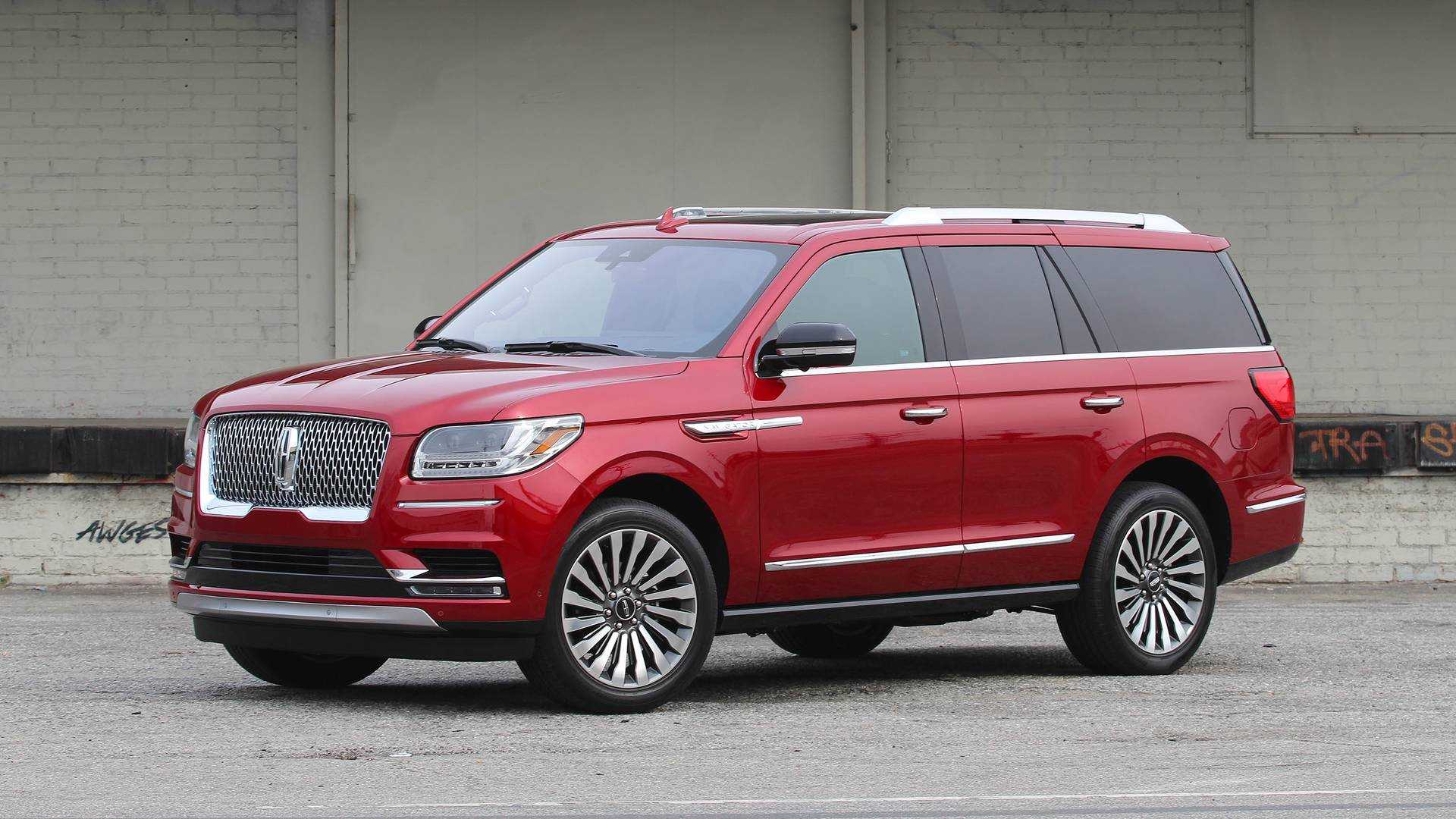
Suspension tuning plays a crucial role in the Navigator’s refined character. The adaptive air suspension system continuously adjusts damping rates and ride height based on driving conditions, effectively isolating occupants from road irregularities that would otherwise transmit noise and vibration into the cabin.
The system’s sophisticated algorithms can distinguish between intentional inputs and unwanted disturbances, allowing for precise control over the vehicle’s dynamic behavior while maintaining exceptional comfort.
The powertrain contributes significantly to the Navigator’s serene environment. The twin-turbocharged 3.5-liter V6 engine operates with remarkable smoothness, its aluminum construction and sophisticated engine mounts virtually eliminating vibration transfer to the cabin.
The 10-speed automatic transmission shifts with imperceptible smoothness, its programming prioritized for refinement over performance. Active noise cancellation technology uses strategically placed microphones and speakers to generate inverse sound waves that effectively cancel unwanted engine and road noise.
Interior materials and construction quality further enhance the Navigator’s acoustic performance. The extensive use of soft-touch materials, genuine leather, and thick carpeting creates a luxurious environment that naturally absorbs sound.
Door seals employ multiple contact points and sophisticated geometry to eliminate wind noise, while the overall fit and finish prevent the squeaks and rattles that plague lesser vehicles.
The result is a cabin environment that remains composed and refined even during extended highway cruising, making the Navigator an excellent choice for luxury-minded buyers who prioritize comfort above all else.
2. Mercedes-Benz GLS – Teutonic Precision in Acoustic Engineering
The Mercedes-Benz GLS represents the pinnacle of German engineering applied to the three-row luxury SUV segment. Mercedes’ most capacious SUV offers expected levels of luxury and style with several engine options ranging from the rather rowdy 4.0-liter AMG V8 to the non-AMG GLS 580 and down to the GLS 450 with its 3.0-liter inline-six.
The GLS 450, in particular, demonstrates exceptional NVH characteristics that establish it among the quietest SUVs available today. Mercedes’ approach to NVH control begins with the Modular High Architecture (MHA) platform, which was designed from the ground up to accommodate the unique challenges of luxury SUV construction.
The platform utilizes extensive use of aluminum and high-strength steel in strategic locations, creating a structure that is both lightweight and exceptionally rigid. This rigidity is crucial for minimizing flex and the associated squeaks and rattles that can develop over time, particularly in large SUVs subjected to significant structural loads.
The GLS employs Mercedes’ sophisticated AIRMATIC air suspension system, which represents one of the most advanced adaptive suspension technologies available.
The system continuously monitors road conditions through multiple sensors and adjusts damping characteristics in real-time, effectively isolating the cabin from road imperfections.
The air springs themselves provide superior isolation compared to conventional coil springs, as they can be precisely tuned for optimal comfort without sacrificing handling characteristics.
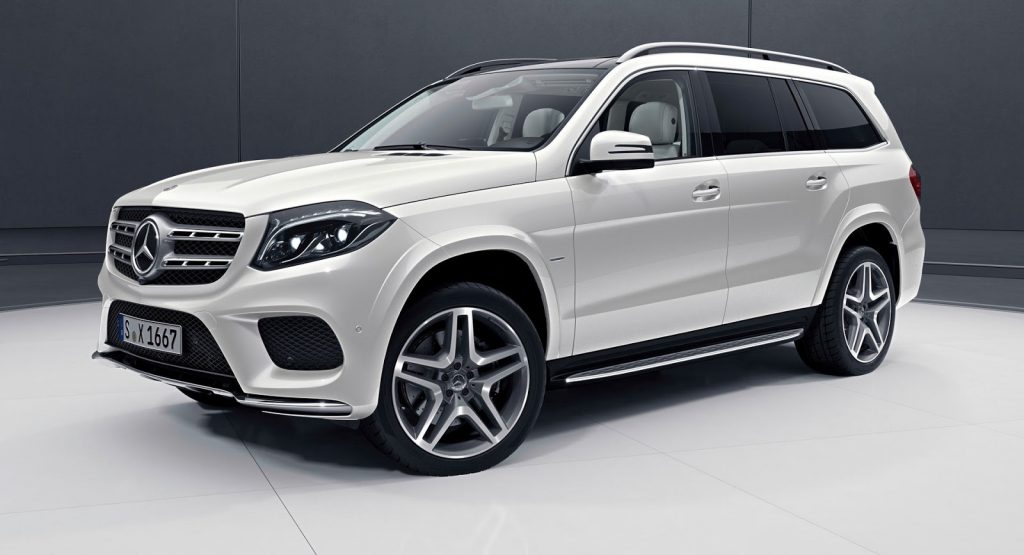
Acoustic engineering in the GLS extends to every detail of the vehicle’s construction. The engine bay features extensive sound insulation, with multiple layers of acoustic materials strategically placed to absorb and deflect engine noise.
The firewall incorporates sophisticated damping materials that prevent vibration transmission from the engine compartment to the passenger cabin. Even the wheel wells feature specialized liners designed to minimize tire noise and road surface interactions.
The GLS’s interior represents a masterpiece of luxury craftsmanship that directly contributes to its exceptional NVH performance. The extensive use of genuine leather, authentic wood trim, and high-quality plastics creates an environment that naturally absorbs sound and vibration.
The seats themselves are engineered with multiple layers of foam and padding that provide not only exceptional comfort but also contribute to the overall acoustic isolation of the cabin.
Wind noise suppression represents another area where the GLS excels. The vehicle’s aerodynamic development included extensive wind tunnel testing focused specifically on acoustic performance.
The door mirrors, side window glass, and overall body shape have been optimized to minimize wind noise at highway speeds. The result is a cabin environment that remains remarkably serene even during high-speed cruising, allowing occupants to conduct conversations in normal tones or enjoy the premium Burmester audio system without interference from external noise sources.
3. Audi Q7 – Quattro Excellence in Cabin Refinement
The Audi Q7 represents the sophisticated evolution of the three-row premium SUV, combining Audi’s legendary attention to detail with cutting-edge acoustic engineering.
Built on Volkswagen Group’s MLB Evo platform, the Q7 benefits from extensive development resources and advanced technologies that establish it among the quietest SUVs in its class.
The Q7’s structural foundation employs a mixed-material approach that optimizes weight distribution while maximizing rigidity. The body structure combines aluminum and high-strength steel in strategic locations, with the aluminum components concentrated in the front and rear sections to improve weight distribution.
This approach not only enhances handling characteristics but also contributes to NVH performance by creating a structure that resists flex and the associated noise and vibration.
Audi’s adaptive air suspension system plays a crucial role in the Q7’s refined character. The system continuously adjusts ride height and damping characteristics based on driving conditions, effectively isolating occupants from road imperfections that would otherwise transmit noise and vibration into the cabin.
The air springs provide superior isolation compared to conventional coil springs, while the adaptive dampers can be precisely tuned for optimal comfort without sacrificing dynamic performance.
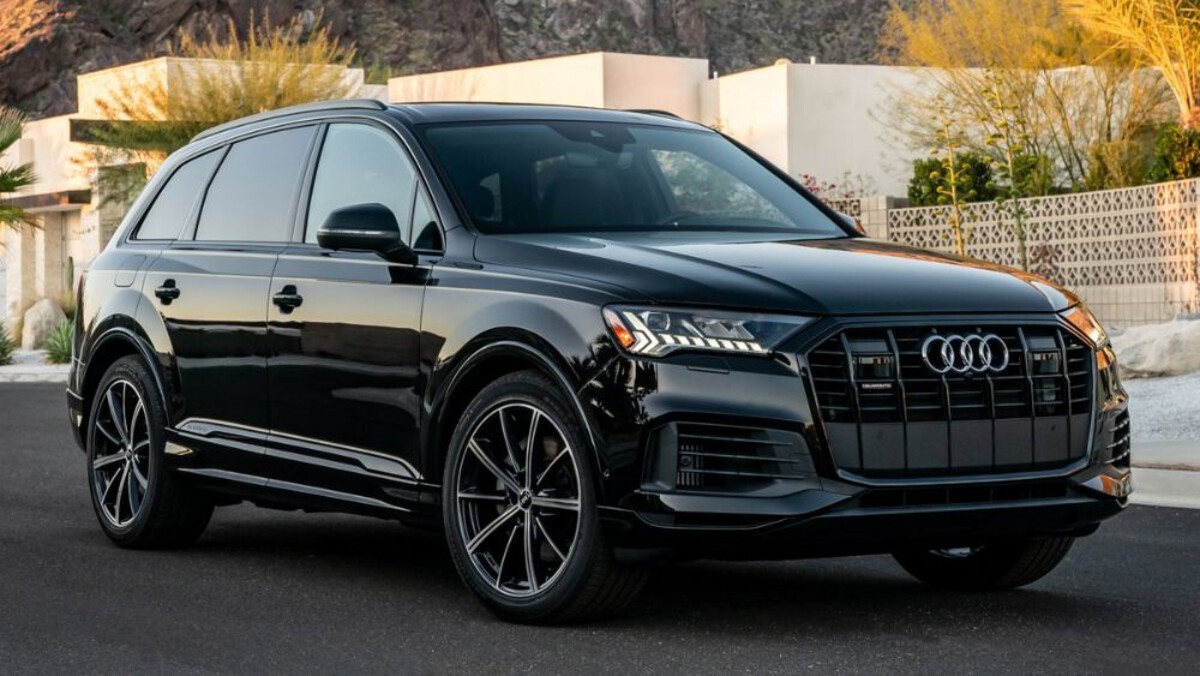
The Q7’s powertrain lineup contributes significantly to its exceptional NVH characteristics. The 3.0-liter supercharged V6 engine operates with remarkable smoothness, its aluminum construction and sophisticated mounting system virtually eliminating vibration transfer to the cabin.
The eight-speed tiptronic transmission shifts with precision and refinement, its programming optimized for smooth operation rather than aggressive performance. The optional quattro all-wheel-drive system operates seamlessly, distributing power without the driveline vibrations that can plague less sophisticated systems.
Acoustic engineering in the Q7 extends to every aspect of the vehicle’s construction. The engine compartment features extensive sound insulation, with multiple layers of acoustic materials strategically placed to absorb engine noise.
The firewall incorporates advanced damping materials that prevent vibration transmission from the powertrain to the passenger compartment. Even minor details such as the fuel filler door and cargo area receive attention to minimize noise intrusion.
The Q7’s interior represents Audi’s commitment to luxury and refinement. The extensive use of premium materials, including genuine leather, real wood trim, and high-quality plastics, creates an environment that naturally absorbs sound and vibration.
The virtual cockpit and MMI infotainment system operate silently, eliminating the electronic noise that can plague lesser systems. The result is a cabin environment that remains composed and refined during all driving conditions, making the Q7 an excellent choice for discerning buyers who appreciate German engineering excellence.
4. Volvo XC90 – Scandinavian Serenity in Motion
The Volvo XC90 represents a remarkable achievement in Swedish engineering, combining minimalist Scandinavian design with sophisticated acoustic engineering.
Some of the top SUVs noted for their noise-isolated cabins in 2025 include the Tesla Model X, Volvo XC90, and the Mercedes-Benz GLE. Built on Volvo’s Scalable Product Architecture (SPA), the XC90 demonstrates how thoughtful engineering can create exceptional NVH performance without relying solely on mass and complexity.
The XC90’s structural foundation represents a masterclass in efficient engineering. The SPA platform utilizes high-strength steel and aluminum in strategic locations, creating a structure that maximizes rigidity while minimizing weight.
This approach not only improves fuel efficiency but also enhances NVH performance by creating a structure that resists flex and the associated noise and vibration. The platform’s design also incorporates sophisticated crumple zones and energy absorption structures that contribute to both safety and acoustic isolation.
Volvo’s approach to suspension tuning prioritizes comfort and refinement over aggressive handling characteristics. The XC90’s suspension system employs sophisticated damping algorithms that effectively isolate the cabin from road imperfections while maintaining composed handling characteristics.
The optional air suspension system provides even greater refinement, with the ability to adjust ride height and damping characteristics based on driving conditions and driver preferences.
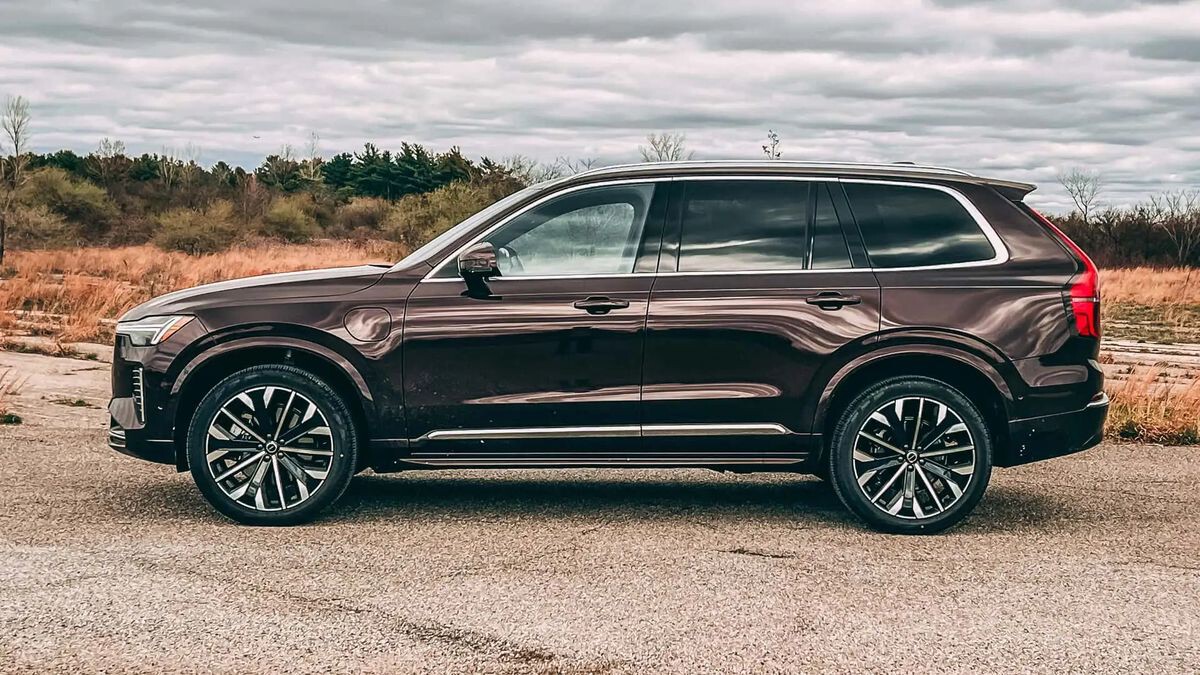
The XC90’s powertrain represents a significant departure from traditional luxury SUV approaches. The Drive-E four-cylinder engines, available in both turbocharged and supercharged configurations, operate with exceptional smoothness despite their relatively small displacement.
The engines’ aluminum construction and sophisticated mounting system virtually eliminate vibration transfer to the cabin, while the eight-speed automatic transmission shifts with imperceptible smoothness.
Acoustic engineering in the XC90 focuses on creating a naturally quiet environment rather than relying heavily on active noise cancellation. The body structure incorporates extensive sound-deadening materials, with particular attention paid to the firewall and floor pan areas where engine and road noise typically intrude.
The engine compartment features sophisticated acoustic treatments that absorb and deflect engine noise, while the exhaust system is tuned for minimal intrusion into the cabin environment.
The XC90’s interior design philosophy directly contributes to its exceptional NVH performance. The minimalist Scandinavian approach emphasizes natural materials and clean lines, creating an environment that naturally promotes tranquility.
The extensive use of genuine leather, real wood trim, and high-quality textiles creates surfaces that absorb sound and vibration. The seats themselves are engineered for exceptional comfort and support, with multiple adjustment options that allow occupants to find their optimal position for long-distance comfort.
Also Read: 5 Trucks With the Best LED Bed Lighting and 5 With Dim Lamps
5. BMW X7 – Bavarian Luxury in Acoustic Excellence
The BMW X7 represents the pinnacle of Bavarian luxury SUV engineering, combining BMW’s dynamic heritage with the refinement expected of a flagship luxury vehicle.
Built on BMW’s CLAR (Cluster Architecture) platform, the X7 employs sophisticated engineering solutions that establish it among the quietest and most refined SUVs available today.
The X7’s structural foundation utilizes BMW’s innovative Construction method, which combines carbon fiber, aluminum, and high-strength steel in strategic locations.
This approach creates a structure that is both lightweight and exceptionally rigid, providing an excellent foundation for NVH control. The carbon fiber components, in particular, provide excellent vibration damping characteristics while reducing overall weight, contributing to both performance and refinement.
BMW’s adaptive suspension system plays a crucial role in the X7’s refined character. The system continuously monitors road conditions and adjusts damping characteristics in real-time, effectively isolating occupants from road imperfections that would otherwise transmit noise and vibration into the cabin.
The optional Executive Drive Pro system adds rear-wheel steering and active roll stabilization, further enhancing both comfort and dynamic performance.
The X7’s powertrain lineup represents BMW’s commitment to both performance and refinement. The standard 3.0-liter turbocharged inline-six engine operates with characteristic BMW smoothness, its aluminum construction and sophisticated mounting system minimizing vibration transfer to the cabin.
The available 4.4-liter twin-turbocharged V8 provides exceptional power while maintaining remarkable refinement, its sophisticated engine management system optimizing performance and acoustic characteristics.
Acoustic engineering in the X7 extends to every aspect of the vehicle’s design and construction. The engine compartment features extensive sound insulation, with multiple layers of acoustic materials strategically placed to absorb engine noise.
The exhaust system is carefully tuned to provide an appropriate sound signature while minimizing intrusion into the cabin environment. Even the air conditioning system operates with minimal noise, contributing to the overall serene cabin environment.
The X7’s interior represents BMW’s interpretation of modern luxury, with extensive use of premium materials and sophisticated technology. The available Bowers & Wilkins Diamond Surround Sound System provides exceptional audio quality while the cabin’s acoustic properties ensure optimal sound reproduction.
The massage seats, available in multiple configurations, provide exceptional comfort while contributing to the overall premium experience that defines the X7 ownership experience.
5 SUVs With Rattling Issues
These noise-plagued vehicles suffer from persistent interior rattles due to inadequate assembly tolerances, cheap trim materials, and insufficient sound dampening that create annoying acoustic disturbances throughout normal driving operations across various road conditions and temperature changes.
Their problematic engineering includes loose panel fitments, basic insulation materials, and poor component isolation that amplify the mechanical noise typically associated with thermal expansion cycles or vibration transmission from road irregularities.
From dashboard buzzing that disrupts audio enjoyment to door panel rattles that create constant distraction during city driving, these acoustic issues demand frequent dealer visits and temporary fixes.
Owners discover that while these SUVs may offer attractive pricing and feature content, their build quality creates persistent annoyance through various interior noises that significantly impact driving enjoyment and require ongoing troubleshooting efforts to achieve acceptable cabin refinement levels.
1. Mitsubishi Outlander – Economy Engineering’s Acoustic Shortcomings
The Mitsubishi Outlander represents the challenging reality of budget SUV development, where cost constraints often force compromises that significantly impact NVH performance.
While the Outlander offers competitive pricing and decent reliability, its acoustic characteristics demonstrate the significant gulf between economy and premium SUV engineering.
The Outlander’s structural foundation reveals the first signs of its NVH challenges. Built on Mitsubishi’s GS platform, the vehicle employs conventional steel construction with minimal use of advanced materials or sophisticated engineering solutions.
The platform’s design prioritizes cost efficiency over refinement, resulting in a structure that exhibits noticeable flex under load. This flex translates directly into squeaks, rattles, and vibrations that become increasingly apparent as the vehicle ages, particularly in areas where different materials meet or moving parts interact.
Suspension tuning in the Outlander reflects the challenging balance between cost and performance. The conventional MacPherson strut front suspension and multi-link rear suspension employ basic dampers and springs that provide adequate ride quality but lack the sophisticated tuning required for exceptional NVH performance.
Road imperfections transmit directly into the cabin, creating a harsh and unsettled ride quality that becomes particularly noticeable on rough pavement or during highway cruising.
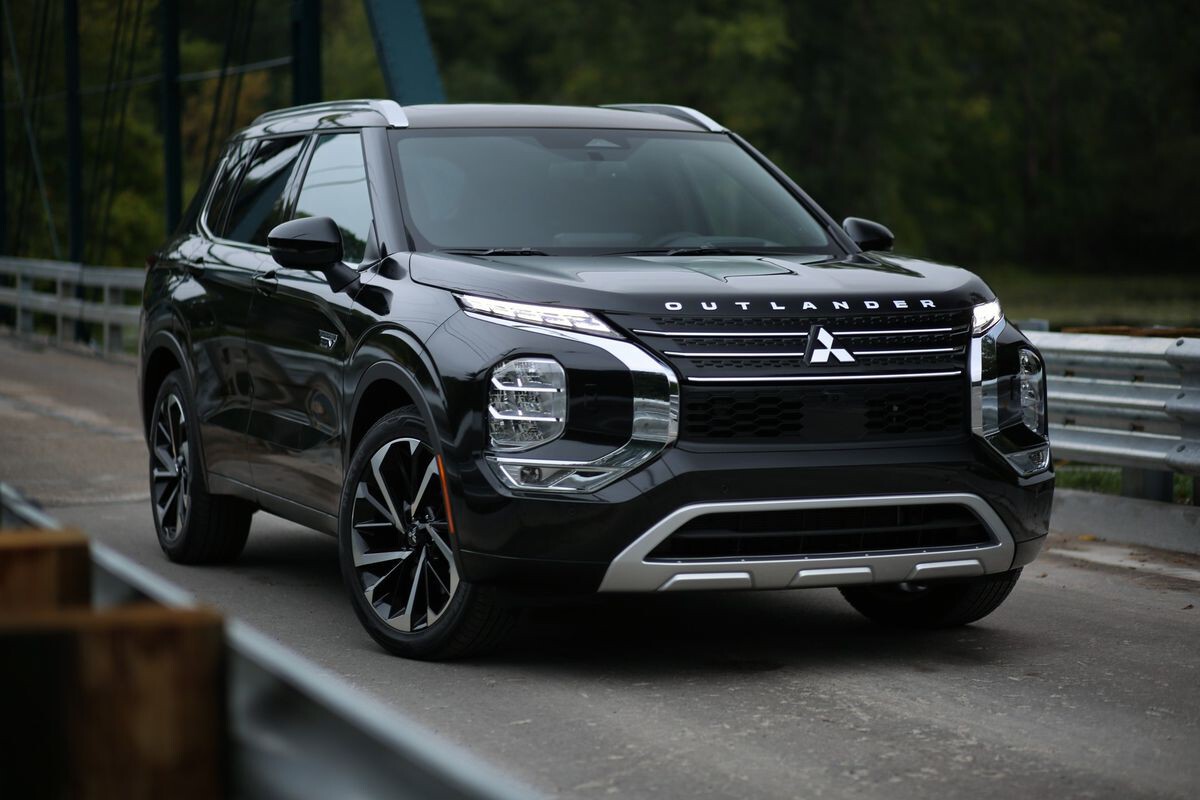
The Outlander’s powertrain contributes significantly to its poor NVH characteristics. The 2.5-liter four-cylinder engine, while adequate for basic transportation, exhibits noticeable vibration and noise that intrudes into the cabin environment.
The engine’s mounting system lacks the sophisticated isolation found in premium vehicles, allowing vibrations to transmit directly through the structure.
The continuously variable transmission (CVT) compounds these issues with its characteristic drone and lack of discrete gear changes, creating an acoustic signature that many drivers find objectionable.
Acoustic engineering in the Outlander reflects the realities of budget vehicle development. Sound insulation materials are minimal, with basic foam and fabric treatments that provide limited effectiveness.
The firewall lacks the sophisticated damping materials found in premium vehicles, allowing engine noise to intrude freely into the cabin. Door seals employ simple designs that become less effective over time, leading to increasing wind noise as the vehicle ages.
The Outlander’s interior construction further compounds its NVH challenges. Extensive use of hard plastics creates surfaces that reflect rather than absorb sound, amplifying noise within the cabin.
Panel gaps and fit issues, while not necessarily affecting functionality, create opportunities for squeaks and rattles to develop. The seats, while functional, lack the sophisticated construction and materials that contribute to acoustic isolation in premium vehicles.
The result is a cabin environment that becomes increasingly fatiguing during extended driving, particularly at highway speeds where wind and road noise become dominant factors.
2. Jeep Compass – Compromised Refinement in Pursuit of Style
The Jeep Compass presents a fascinating case study in how attractive styling and competitive pricing can coexist with significant NVH challenges. While the Compass offers appealing exterior design and decent off-road capability, its acoustic characteristics reveal the limitations of its platform and engineering development.
The Compass’s structural foundation, based on Fiat Chrysler’s Small Wide platform, demonstrates the challenges of adapting architectures across multiple vehicle types and price points.
The platform, originally designed for compact cars, requires significant modifications to accommodate SUV proportions and capabilities. These adaptations often involve compromises that affect structural rigidity and, consequently, NVH performance.
The body structure exhibits noticeable flex under various load conditions, contributing to squeaks and rattles that become increasingly apparent over time.
Suspension design in the Compass reflects the platform’s mixed heritage. The MacPherson strut front suspension and independent rear suspension provide adequate ride quality for daily driving but lack the sophisticated tuning required for exceptional refinement.
Road noise transmission is particularly problematic, with harsh impacts and vibrations readily apparent in the cabin. The suspension’s inability to effectively isolate road irregularities creates a driving experience that can become fatiguing during extended highway cruising.
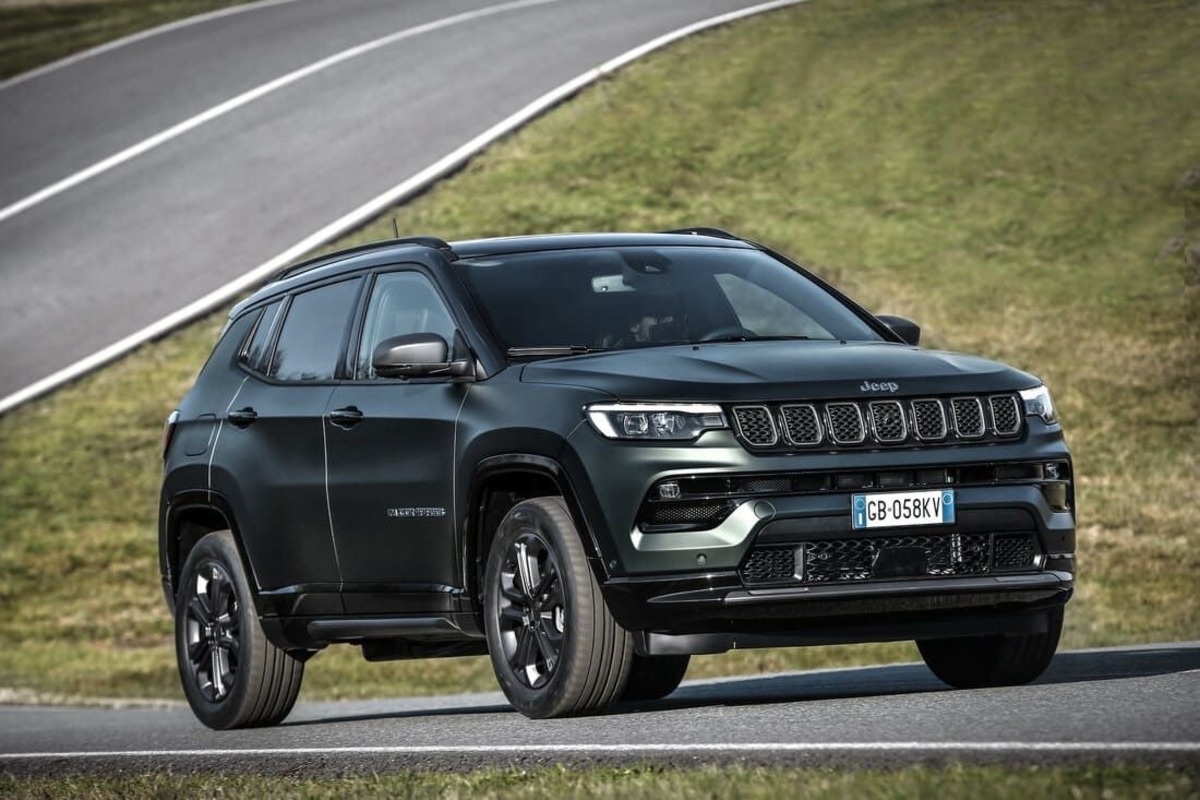
The Compass’s powertrain options contribute to its challenging NVH characteristics. The available engines, while adequate for basic performance, exhibit vibration and noise levels that intrude into the cabin environment.
The 2.4-liter Tigershark engine, in particular, demonstrates roughness and vibration that become particularly noticeable during acceleration and highway cruising. The nine-speed automatic transmission, while offering good fuel economy, sometimes exhibits hesitation and rough shifting that further compromises refinement.
Acoustic engineering in the Compass reveals the cost pressures facing mainstream manufacturers. Sound insulation materials are adequate but not exceptional, with basic treatments that provide limited effectiveness against road and wind noise.
The cabin’s hard surfaces and minimal sound-absorbing materials create an environment where noise is amplified rather than controlled. Door seals and window mechanisms lack the precision found in premium vehicles, allowing wind noise to intrude at highway speeds.
The Compass’s interior construction and materials further impact its NVH performance. Extensive use of hard plastics and minimal sound-absorbing materials creates surfaces that reflect rather than absorb noise.
Panel fit and finish, while acceptable for the price point, exhibits gaps and inconsistencies that can lead to squeaks and rattles. The seats, while reasonably comfortable, lack the sophisticated construction that contributes to overall cabin refinement in more expensive vehicles.
3. Nissan Pathfinder – CVT Drone and Structural Compromises
The Nissan Pathfinder represents the challenges facing mainstream three-row SUVs in an increasingly competitive marketplace. While the Pathfinder offers competitive pricing and decent practicality, its NVH characteristics demonstrate significant compromises that affect the overall ownership experience.
The Pathfinder’s structural foundation, built on Nissan’s D platform, reveals the cost pressures affecting mainstream SUV development. The platform employs conventional steel construction with minimal use of advanced materials or sophisticated engineering solutions.
The resulting structure exhibits noticeable flex under load, particularly evident in the rear cargo area where large openings compromise structural rigidity. This flex translates into squeaks and rattles that become increasingly apparent as the vehicle ages.
Suspension tuning in the Pathfinder reflects the challenging balance between comfort, handling, and cost. The MacPherson strut front suspension and independent rear suspension provide adequate ride quality but lack the sophisticated damping control found in premium vehicles.
Road noise transmission is particularly problematic, with various road surfaces creating distinct and often intrusive noise signatures in the cabin. The suspension’s inability to effectively isolate these disturbances creates a driving experience that lacks the refinement expected in the competitive three-row SUV segment.
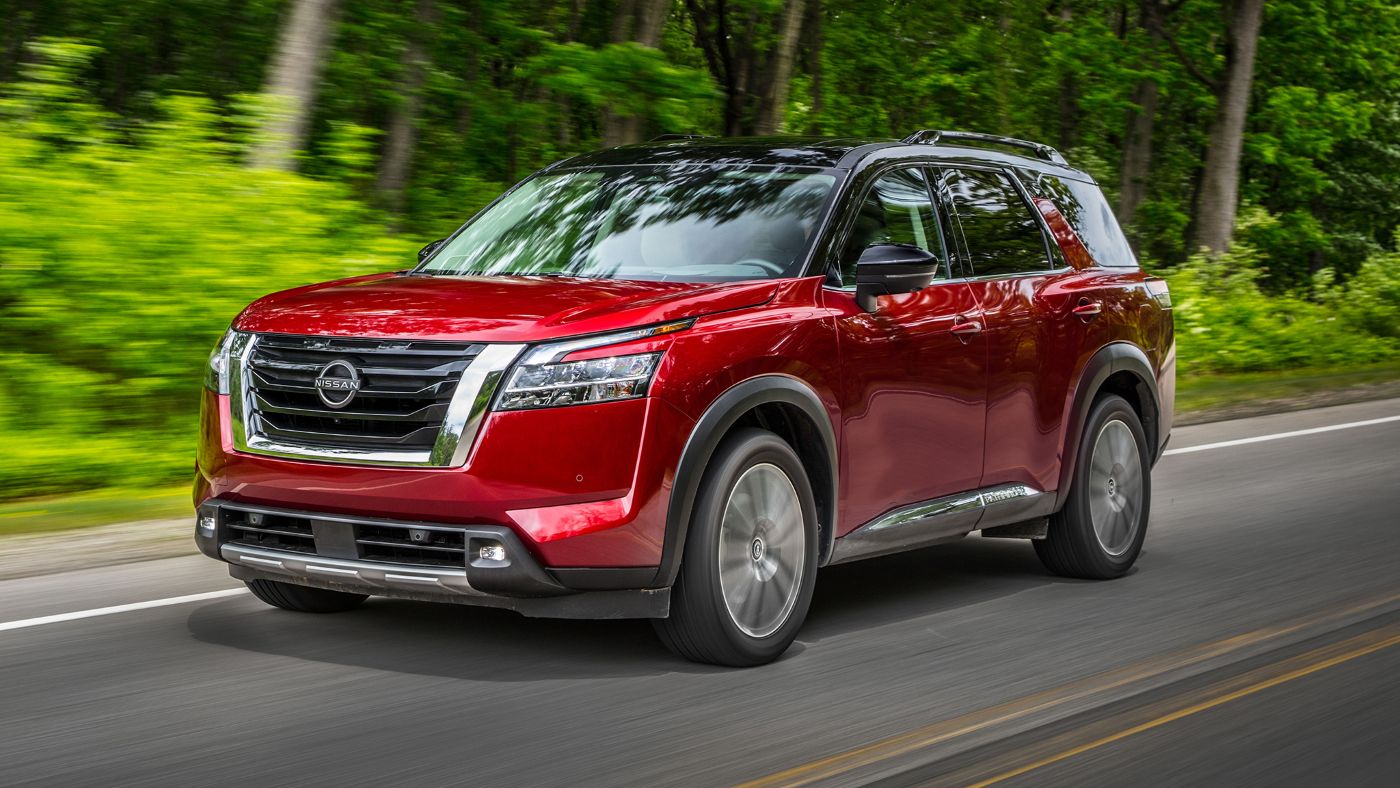
The Pathfinder’s powertrain represents perhaps its most significant NVH challenge. The 3.5-liter V6 engine, while providing adequate power, exhibits vibration characteristics that transmit into the cabin.
More problematic is the continuously variable transmission (CVT), which creates a characteristic drone that many drivers find objectionable. The CVT’s operation, while efficient, lacks the discrete gear changes that provide acoustic feedback and refinement in conventional automatic transmissions.
This creates a driving experience where engine noise levels remain high during acceleration, contributing to driver fatigue. Acoustic engineering in the Pathfinder reflects the realities of mainstream vehicle development.
Sound insulation materials are basic, providing limited effectiveness against engine, road, and wind noise. The firewall lacks sophisticated damping materials, allowing engine noise to intrude into the cabin.
The floor pan employs minimal sound-deadening treatments, permitting road noise to penetrate the passenger compartment. These compromises become particularly apparent during highway cruising, where multiple noise sources combine to create a challenging acoustic environment.
The Pathfinder’s interior construction further compounds its NVH challenges. Extensive use of hard plastics and minimal soft-touch materials creates surfaces that reflect rather than absorb sound.
Panel gaps and fit issues, while not affecting basic functionality, create opportunities for squeaks and rattles to develop over time. The seats, while offering reasonable comfort, lack the sophisticated construction and materials that contribute to acoustic isolation in premium vehicles.
4. Kia Sorento – Platform Limitations and Acoustic Oversights
The Kia Sorento represents the ambitious attempt to create a competitive three-row SUV within the constraints of a mainstream budget. While the Sorento offers attractive styling and competitive warranty coverage, its NVH characteristics reveal the limitations of its platform and development priorities.
The Sorento’s structural foundation, built on Kia’s mid-size SUV platform, demonstrates the challenges of creating a competitive three-row vehicle while maintaining cost competitiveness.
The platform employs high-strength steel construction with some aluminum components, but the overall structure exhibits flexibility under load that affects NVH performance.
The body’s tendency to flex, particularly in the rear section where the third-row seating creates structural openings, contributes to squeaks and rattles that become increasingly apparent over time.
Suspension design in the Sorento reflects the platform’s limitations and cost constraints. The MacPherson strut front suspension and multi-link rear suspension provide adequate ride quality for daily use but lack the sophisticated tuning required for exceptional refinement.
Road noise transmission varies significantly based on surface type, with coarse pavement creating particularly intrusive noise levels in the cabin. The suspension’s inability to effectively isolate these disturbances affects comfort during extended highway driving.
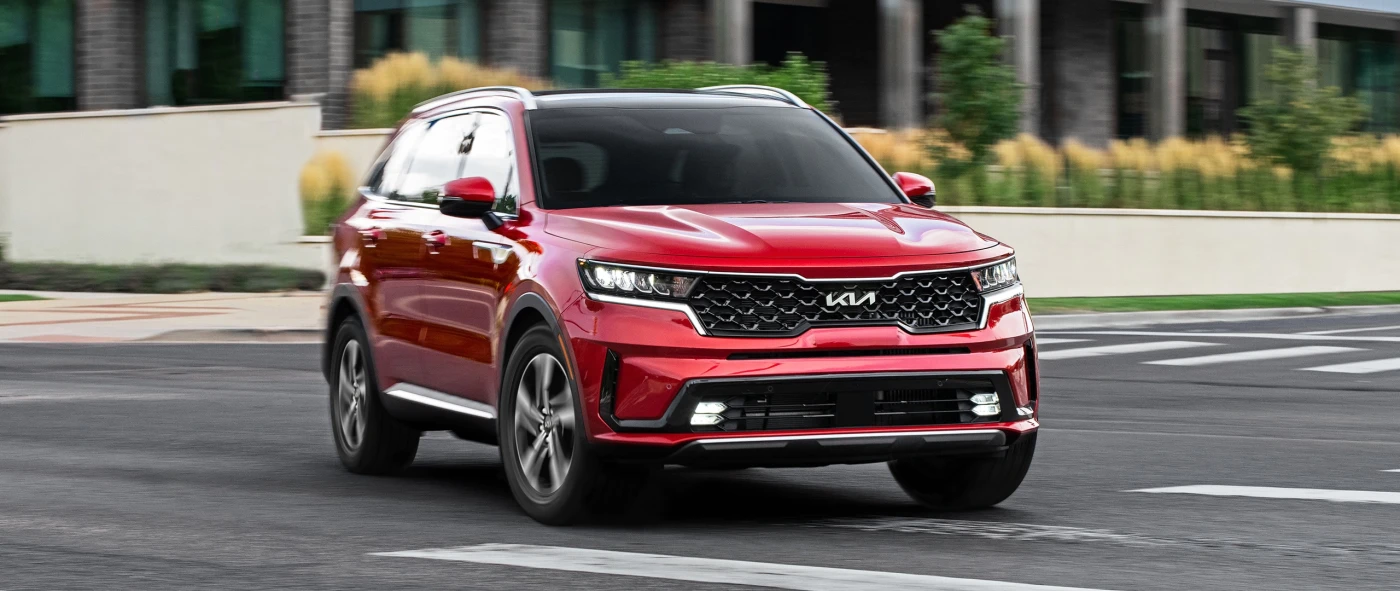
The Sorento’s powertrain options contribute to its NVH challenges through various mechanisms. The available engines, while generally reliable, exhibit vibration characteristics that transmit into the cabin environment.
The 2.5-liter four-cylinder engine, in particular, demonstrates roughness during acceleration that becomes noticeable in the cabin. The eight-speed automatic transmission, while offering good fuel economy, sometimes exhibits shift characteristics that affect refinement, particularly during low-speed maneuvering, where transmission behavior is most apparent.
Acoustic engineering in the Sorento reveals the cost pressures affecting mainstream vehicle development. Sound insulation materials are adequate but not exceptional, with treatments that provide limited effectiveness against road and wind noise intrusion.
The engine compartment lacks the sophisticated acoustic treatments found in premium vehicles, allowing engine noise to penetrate the cabin. Wind noise becomes particularly problematic at highway speeds, where door seals and window mechanisms lack the precision required for optimal acoustic isolation.
The Sorento’s interior construction and material choices further impact its NVH performance. While recent generations have improved significantly in terms of material quality, extensive use of hard plastics in key areas creates surfaces that reflect rather than absorb sound.
Panel fit and finish, while generally acceptable, exhibits inconsistencies that can lead to squeaks and rattles over time. The seats, while comfortable for the price point, lack the sophisticated construction that contributes to overall cabin refinement in more expensive vehicles.
5. Honda Pilot – Mainstream Compromises in a Competitive Segment
The Honda Pilot represents Honda’s approach to the competitive three-row SUV segment, prioritizing reliability and practicality over acoustic refinement.
While the Pilot offers Honda’s legendary reliability and decent resale value, its NVH characteristics demonstrate the compromises inherent in mainstream vehicle development.
The Pilot’s structural foundation, built on Honda’s global mid-size SUV platform, reflects the company’s focus on functionality over refinement. The platform employs conventional steel construction with strategic use of high-strength materials, but the overall structure exhibits characteristics that affect NVH performance.
The body’s design, optimized for interior space and practicality, creates large openings and structural compromises that contribute to flex and the associated noise and vibration issues.
Suspension tuning in the Pilot reflects Honda’s traditional approach of balancing ride comfort with handling competence. The MacPherson strut front suspension and multi-link rear suspension provide predictable handling characteristics but lack the sophisticated tuning required for exceptional NVH performance.
Road noise transmission varies significantly based on surface conditions, with certain pavement types creating particularly intrusive cabin noise. The suspension’s basic damping characteristics allow road irregularities to transmit into the cabin more readily than in premium competitors.
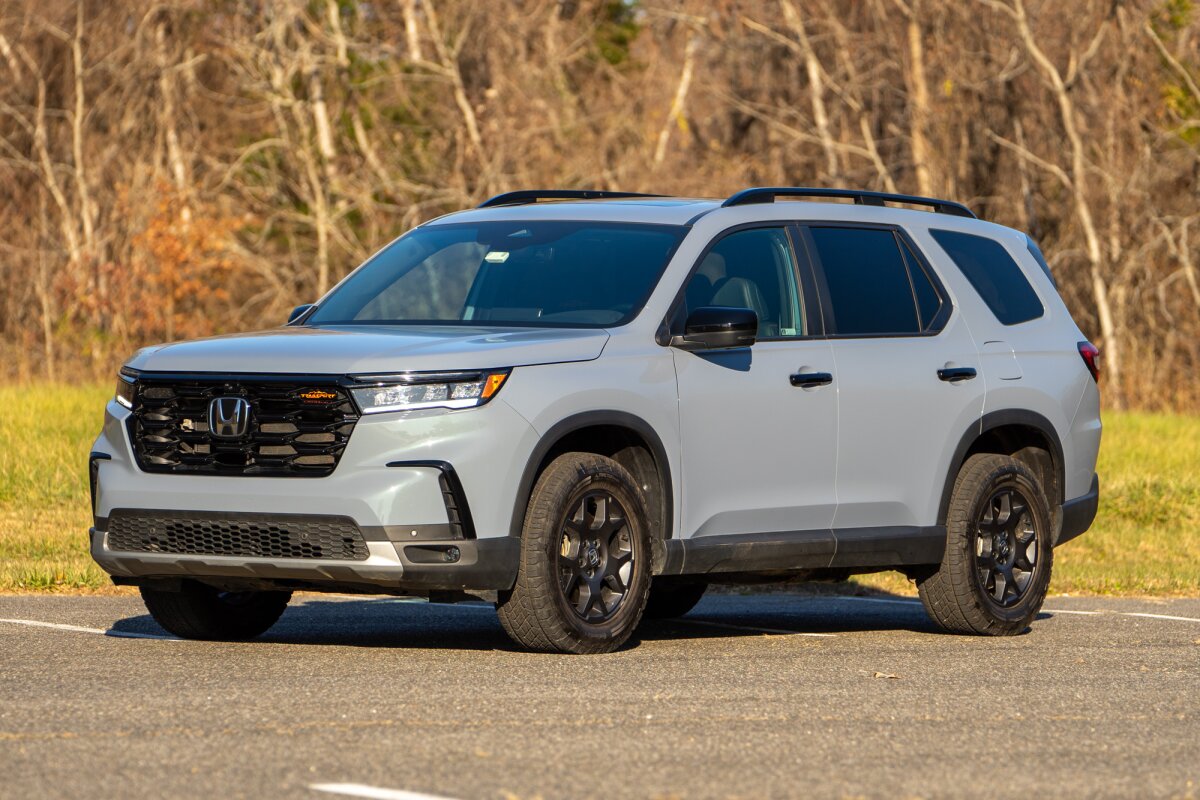
The Pilot’s powertrain contributes to its NVH challenges through several mechanisms. The 3.5-liter V6 engine, while reliable and reasonably smooth, exhibits vibration characteristics that become apparent in the cabin during certain operating conditions.
The nine-speed automatic transmission, while offering good fuel economy, sometimes exhibits shift characteristics that affect refinement. The transmission’s programming, optimized for efficiency rather than smoothness, can create noticeable shift events that impact the overall driving experience.
Acoustic engineering in the Pilot reflects Honda’s focus on cost efficiency over acoustic refinement. Sound insulation materials are basic, providing adequate but not exceptional protection against noise intrusion.
The engine compartment lacks sophisticated acoustic treatments, allowing engine noise to penetrate the cabin during acceleration and highway cruising. The firewall employs basic sound-deadening materials that provide limited effectiveness against powertrain noise transmission.
The Pilot’s interior construction and material choices further impact its NVH characteristics. While Honda has improved interior materials in recent generations, extensive use of hard plastics in key areas creates surfaces that reflect rather than absorb sound.
Panel gaps and assembly tolerances, while generally good by Honda standards, still allow for the development of squeaks and rattles over time. The seats, while functional and durable, lack the sophisticated construction and materials that contribute to acoustic isolation in premium vehicles, resulting in a cabin environment that can become fatiguing during extended highway driving.
Also Read: 5 EVs With the Best Torque Delivery and 5 With Lag

